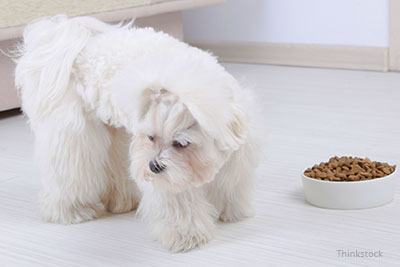At first blush, you might expect that no dog would be a picky eater. Your stereotypical canine readily wolfs down food (even that phrase implies that canines have a ferocious appetite). Some dogs will go after anything even vaguely resembling food and, much to our frequent chagrin, plenty of things that do not– shoes, socks, branches and rocks. So seriously how picky could they be? Well you might be surprised to learn that not all dogs are so quick to eat whatever is put in front of them. How have ancestral eating habits changed?
How have ancestral eating habits changed?
First, regarding the ‘wolfing down’ aspect of how some dogs approach eating, proposed by the Journal of Nutrition’s website, their preference, as a species, for larger, infrequent meals likely goes back to the competitive feeding behavior of early of wolves that were their ancestors. It certainly doesn’t take a PhD in animal behavior to appreciate how eating as much as you could get, as quickly as possible, would be essential in that situation. You only have to have had a few brothers and sisters at your own dinner table to understand.
In spite of that, however, modern dogs apparently do have some innate taste preferences. As far back as the 1981, research indicated that dogs showed a strong taste preference for meats and sugar1. They preferred a diet containing sugar to one that does not, and they actually preferred water with sugar added to water without1. The same research, authored by Katherine Houpt and Sharon Smith, also showed that dogs preferred canned meat to fresh meat, cooked meet to raw meat and have a preference for canned or semi-moist diets over dry kibble. Furthermore, the sense of smell is very important to dogs in determining their food preferences – though apparently not so much when choosing between meat and non-meat options, but more so when discriminating between different meat choices1.
Does your dog only want people food?
Knowing that dogs do have specific taste preferences, it probably comes as little surprise that your dog often begs for people food. How can you curb this behavior? Well, some of that is training. If you’ve shared with him in the past, then he knows human food is an option. But there could be even more to it, too. More recent research (2006) has determined that “dogs acquire food preferences from interacting with recently fed conspecifics2.” What does this mean? Basically dogs prefer food they have smelled on other dog’s breath prior to being fed themselves. Knowing this, I think your dog may develop food preferences based on what you eat— making him even more inclined to want what you are eating.
So what do you do if your dog is a picky eater?
First and foremost, don’t feed your dog whatever he asks for, this will lead to obesity and any number of associated issues. When you get a puppy, raise him to eat his food, not yours, on his own schedule, not when you are eating, and certainly not off of your dinner table. Pick up his food in between feedings, even if he doesn’t finish it in a reasonable (say 15-20 minute) period of time. And be firm about the rules, provided that he appears happy, healthy and at a good weight. Remember that we should be feeding our dogs high quality, readily digestible diets that rarely require the volume intake that we might think they must need to be eating. Use your veterinarian, not a measuring cup as your guide to what is an appropriate amount.
When could picky eating be a medical problem?
If your dog has been eating well and then becomes picky, especially if he is losing weight or looking unkempt, do not brush it off. Visit your veterinarian immediately to look for a reason. Anything from a bad/spoiled bag of food, to dental disease, to neck pain to other serious medical problems could be the cause. Before you decide to stubbornly stand firm and wait for him to start eating right again, consult your veterinarian.
[Check out 5 must ask questions about pet obesity.]
If you have any questions or concerns, you should always visit or call your veterinarian -- they are your best resource to ensure the health and well-being of your pets.
Resources
- Houpt, Katherine A., and Sharon L. Smith. "Taste Preferences and Their Relation to Obesity in Dogs and Cats." The Canadian Veterinary Journal. U.S. National Library of Medicine, 22 Apr. 1981. Web. 19 Oct. 2015.
- Lupfer-Johnson, Gwen, and Julie Ross. "Dogs Acquire Food Preferences from Interacting with Recently Fed Conspecifics." Science Direct. University of Alaska Anchorage, 7 July 2006. Web. 19 Oct. 2015.
